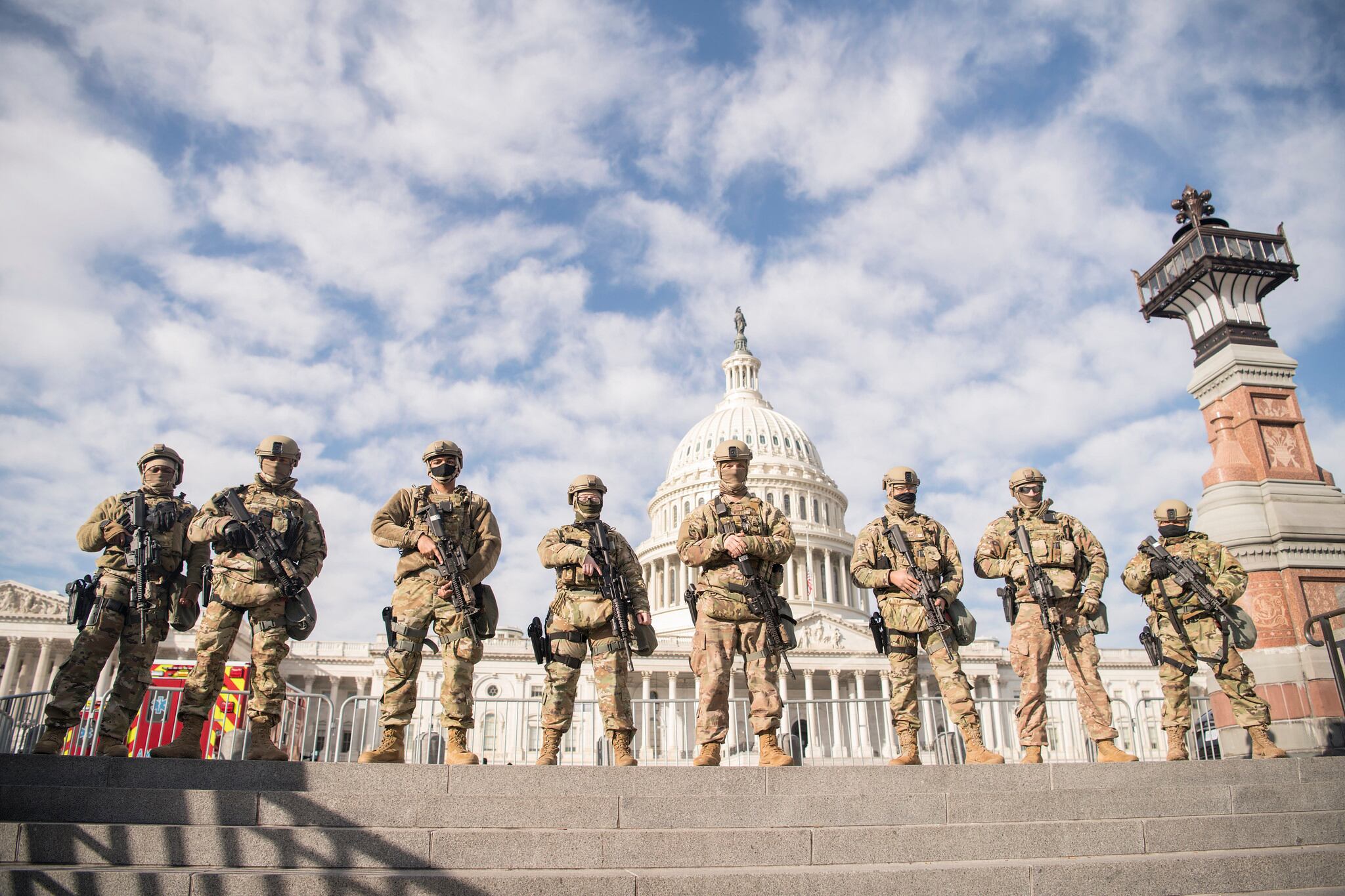The U.S. House of Representatives just passed a $1.9 billion Capitol security funding bill which includes, among other things, $200 million to create a D.C. National Guard quick-reaction force to be mobilized in the event of a crisis in our nation’s capital. While the proposal’s intent is commendable, it does not reflect the reality of how the National Guard operates. There is no question we need to keep our nation’s seat of government safe, but this proposal is not the right solution.
The Guard and Reserve have been extremely responsive in all their roles since 9/11. Over 1 million Guard and Reserve personnel have been mobilized for combat missions overseas and civil support missions at home. They have met all their timelines for mobilization, especially rapid ones in the past year that included the unprecedented challenges of the COVID-19 pandemic and protests across the country. They also successfully completed their most recent mission defending the Capitol complex since the events of Jan. 6 — an appropriate mission for the Guard to conduct because they were called up as civil support with advanced notice and planning, not as a quick-reaction force. There is no issue if the Guard is used in their civil support role with proper notice, training, and command and control. However, the idea that civilians who are traditional drilling reservists would have their uniform, rifles, and ammunition at their civilian desks to be ready in minutes is just not realistic.
Additionally, the $200 million included in the House bill would not be sufficient to create such a quick-reaction force in the Guard. The Guard and Reserve are composed of personnel who transition from their civilian status to uniform status with appropriate notice. This transition does not fit the description of “quick.” This isn’t a “ready battalion” force like the 82nd Airborne, which is on 24/7 strip alert. And while the Reserve components (RCs) and the Guard can mobilize quickly to respond to natural disasters — like hurricanes and other adverse weather events — those units are typically able to do so because they are put on notice beforehand, have lots of experience in these areas, and do not need restrictive rules of engagement or a lot of command and control — all of which would be required in a quick-reaction force. The Independent Commission on the Guard and Reserves established by Congress from 2005 to 2008, which I chaired, looked extensively at DoD’s role in the homeland and made numerous recommendations for enhancing it. However, we did not view using the Guard and Reserve in traditional civilian law enforcement roles as a function that should be expanded.
Another challenge is that the services over the years have had great difficulty in recruiting ground combat units for the Reserve in the D.C. area. The Marine Corps gave up on theirs in the late 1970s and so did the other RCs, as there just was not the base or interest in being in a rifle company or military police unit in this area. And RC units should certainly not be filled with people whose civilian jobs are in law enforcement or first response. Calling them away from their duties to protect their communities would be counterproductive.
If a military quick-reaction force was needed to respond to an extreme situation, Marines stationed at the barracks in Southeast Washington could be mobilized to the Capitol quicker than an RC could be activated. There are two entire infantry rifle companies at the Marine Barracks at 8th and I; additionally, the 3rd U.S. Infantry, “The Old Guard,” stationed at Joint Base Myer-Henderson Hall, Virginia, has the same capabilities. Among their main responsibilities is to provide security to D.C. Frankly, if the U.S military is absolutely needed, we don’t need to add any additional forces or spend more money. Both the Marine rifle companies and the Old Guard have been used during National Security Special Events (NSSE) in Washington in the past, such as inaugurations and state visits, so there is already precedent for this type of mission.
If Congress wants to enhance the capabilities of the Guard and Reserve, they should focus on areas in which their civilian skills truly bring more to the fight than is found in the active forces, such as cybersecurity.
What the world witnessed on Jan. 6 at the U.S. Capitol was abhorrent. There were security breakdowns and lessons learned about how to improve security in the future. As the Senate debates the Capitol security funding bill, they need to take a hard look at the quick-reaction force proposal with an eye toward using, improving and expanding existing civilian law enforcement capabilities. Creating a new quick-reaction force in the National Guard is a bad idea.
Retired Marine Corps Maj. Gen. Arnold L. Punaro is a former staff director of the Senate Armed Services Committee. He was also the former chairman of the Independent Commission on the National Guard and Reserves and the former chairman of the Secretary of Defense’s Reserve Forces Policy Board.
Editor’s note: This is an op-ed and as such, the opinions expressed are those of the author. If you would like to respond, or have an editorial of your own you would like to submit, please contact Military Times managing editor Howard Altman, haltman@militarytimes.com.




